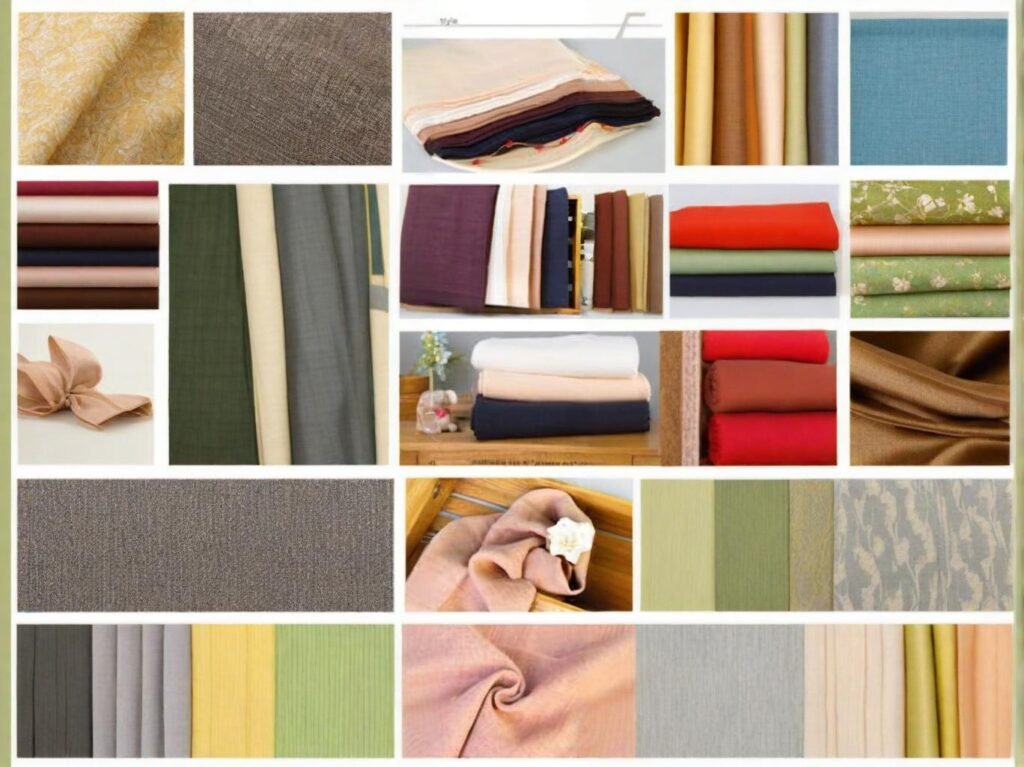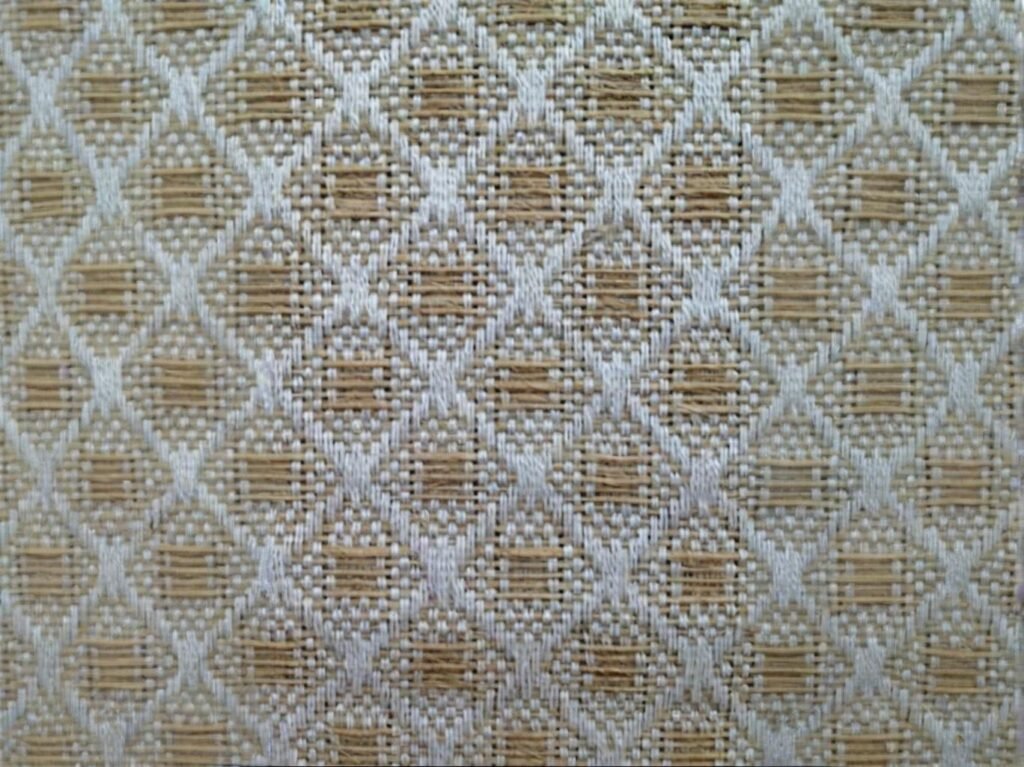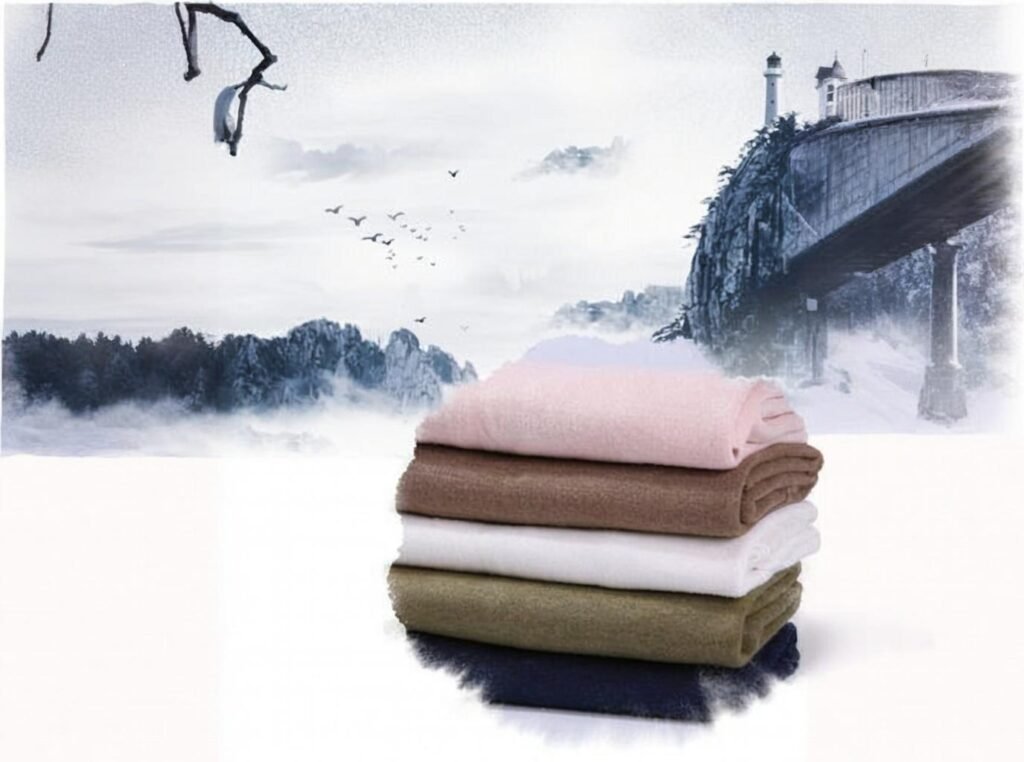The textile industry in 2025 is witnessing a significant shift toward sustainable and high-performance natural fibers, and ramie has emerged as a star player. Often overshadowed by cotton and linen, ramie offers exceptional breathability, strength, and resistance to wrinkles, making it increasingly popular for clothing lines that prioritize durability and eco-conscious production. Ramie is a versatile plant-based fiber suitable for apparel, offering natural sheen, high tensile strength, and excellent moisture absorption. Buyers looking for sustainable, high-quality clothing material in 2025 consider factors such as fiber grade, supplier reliability, blending options, and supply chain efficiency.
What makes ramie particularly appealing is its balance of natural comfort and durability, which aligns with consumer demand for long-lasting, eco-friendly garments. Imagine a summer linen shirt that never loses shape and stays crisp through multiple washes—this is precisely what ramie-based clothing can deliver. As fashion brands strive to differentiate their collections, understanding the nuances of ramie sourcing becomes essential.
What Is Ramie Fabric and Why Is It Gaining Popularity in 2025?

Ramie fabric, derived from the Boehmeria nivea plant, is one of the oldest known fiber crops in human history. Archaeological evidence suggests that ramie fibers were used in China over 6,000 years ago, long before cotton became widely cultivated. Traditionally, ramie was favored for its sheer durability and silky luster, often used in ceremonial garments, fine linens, and utilitarian fabrics such as uniforms.
In 2025, ramie is experiencing a resurgence in global textile markets. Unlike cotton, ramie fibers are longer, stronger, and naturally resistant to microbial growth, including mold and bacteria, making them ideal for apparel that requires both strength and comfort. Modern textile processing technologies have addressed traditional challenges associated with ramie, such as brittleness, low elasticity, and processing difficulty, enabling smoother, softer, and more versatile fabrics suitable for contemporary fashion. Ramie is a natural cellulose fiber with a subtle sheen, exceptional tensile strength, and high moisture absorbency. Its growing popularity is largely fueled by sustainability trends, increasing consumer demand for natural fibers, and advancements in processing technology that mitigate previous limitations, such as fiber stiffness and shrinkage. Leading textile mills have developed techniques such as enzyme treatment, blending with cotton or hemp, and mechanical softening to produce fabrics that retain ramie’s inherent durability while enhancing hand feel.
Understanding Ramie Fiber
Origins and Historical Use
Ramie is predominantly grown in China, Thailand, and the Philippines, regions that offer favorable climates for the plant. In China, Jiangxi and Hunan provinces remain the largest cultivation areas, accounting for over 70% of global production. Traditionally, ramie was used in ceremonial garments, ropes, fishing nets, and sailcloth due to its high tensile strength and resistance to decay. Early woven fabrics from ramie were often stiff and required labor-intensive processing, which limited widespread adoption. However, these fibers were prized for their longevity; textiles made from ramie could last decades without significant deterioration.
Properties Driving Popularity
Ramie’s intrinsic properties make it increasingly attractive for modern apparel and home textiles:
- Tensile Strength: Ramie fibers are three to four times stronger than cotton, comparable to linen, making them suitable for clothing and industrial fabrics requiring long-term durability.
- Moisture Absorption: With the ability to absorb approximately 12–13% of their dry weight in moisture, ramie fabrics remain breathable and comfortable, particularly in warm climates.
- Durability: Naturally resistant to mold, mildew, and insect damage, ramie reduces the need for chemical treatments, aligning with eco-friendly production standards.
- Thermal Stability: Ramie maintains its shape well under heat, reducing shrinkage during laundering, which is a key factor for premium clothing and uniform production.
Environmental Appeal
Sustainability is a core driver of ramie’s renewed interest. Unlike cotton, which requires 20,000 liters of water to produce 1 kg of fiber, ramie cultivation demands significantly less water and few pesticides. This low environmental footprint, combined with complete biodegradability, positions ramie as an ideal choice for brands emphasizing eco-conscious and sustainable textiles.
Ramie Fiber Compared with Other Natural Fibers
| Fiber Type | Tensile Strength | Moisture Absorption | Typical Applications | Sustainability |
|---|---|---|---|---|
| Ramie | Very High | 12–13% | Shirts, dresses, uniforms, home textiles | High |
| Cotton | Moderate | 8–10% | Casual wear, denim, bedding | Moderate |
| Linen | High | 10–12% | Summer clothing, tablecloths, upholstery | High |
| Hemp | Very High | 10–12% | Denim blends, outerwear, eco-friendly fabrics | Very High |
The table above demonstrates that ramie offers a unique combination of strength, moisture management, and environmental benefits, making it particularly suitable for premium, durable, and sustainable apparel.
Sustainable Fashion Application
A European sustainable fashion brand recently launched a summer capsule collection using a 70% ramie and 30% cotton blend. Their testing revealed several advantages over pure cotton shirts:
- Reduced Shrinkage: The blend experienced 40% fewer shrinkage complaints, ensuring consistent sizing for customers.
- Improved Longevity: Ramie’s high tensile strength extended the garment’s life cycle by 25–30%, reducing returns and increasing customer satisfaction.
- Enhanced Comfort: Advanced mechanical softening techniques produced a fabric with a silky touch, addressing historical complaints of ramie’s stiffness.
As a result, the brand observed higher repeat purchases and positive feedback regarding the fabric’s hand feel and durability, proving ramie’s potential in modern sustainable fashion.
Market Trends and Future Outlook
Global demand for ramie is projected to grow at a CAGR of 4–5% between 2023 and 2027, driven by:
- Sustainability regulations: Governments and retailers increasingly demand low-impact textiles.
- Natural fiber preference: Consumers, particularly in North America and Europe, are moving away from synthetic fibers due to health and environmental concerns.
- Innovation in fiber processing: Enzyme treatments, blending techniques, and softening technologies have made ramie more versatile for casual, formal, and performance wear.
Leading textile suppliers are also investing in vertical integration, controlling everything from raw ramie cultivation to finished fabric production, ensuring consistent quality and supply reliability.
Ramie fabric, with its strength, moisture management, and eco-friendly properties, is uniquely positioned to meet the demands of 2025’s fashion and textile markets. Advances in processing techniques and sustainable cultivation practices have transformed ramie from a traditional, niche fiber into a versatile, high-performance material. Brands that adopt ramie blends can benefit from longer-lasting garments, superior comfort, and alignment with global sustainability initiatives, giving them a competitive edge in an increasingly eco-conscious market.
Which Properties Make Ramie Suitable for Clothing Applications?
Ramie has long been valued in textile history for its combination of strength, luster, and functionality, and in 2025, it is increasingly recognized by fashion brands and apparel manufacturers as a high-performance natural fiber. Unlike cotton or linen, ramie provides a naturally crisp hand feel, excellent breathability, and remarkable resistance to wrinkles, making it ideal for garments that combine style with durability. Its properties are further enhanced when blended with fibers such as cotton, silk, or selected synthetics, offering designers a versatile material for premium clothing lines.
The renewed interest in ramie arises from both consumer demand and technical innovation. Global surveys indicate that 68% of eco-conscious consumers prefer natural fibers over synthetic alternatives, particularly for daily wear, office attire, and summer collections. Ramie fits perfectly within this trend, as it provides long-lasting comfort and performance while minimizing environmental impact. Ramie’s suitability for apparel is grounded in its high tensile strength, silky luster, moisture management, and durability. These properties make it ideal for garments that are worn frequently and require minimal maintenance, such as shirts, trousers, dresses, and uniforms. Modern processing techniques—including enzyme softening, mechanical finishing, and fiber blending—enhance ramie’s natural qualities, reducing brittleness and improving flexibility.
Key Properties of Ramie for Apparel
1. Strength and Durability
One of ramie’s most remarkable attributes is its tensile strength, which surpasses cotton by 3–4 times and is comparable to hemp. This characteristic ensures that garments can withstand repeated washing, stretching, and wear, reducing tearing and extending their usable life.
For apparel manufacturers, high tensile strength also means fewer production defects, such as fiber breakage during weaving or sewing. Unlike weaker fibers that may fray or distort during tailoring, ramie maintains its structural integrity, ensuring precise cuts, clean seams, and consistent garment dimensions.
Recent lab tests indicate that ramie fibers retain over 90% of their tensile strength after 50 industrial laundering cycles, compared to only 60–65% for cotton fabrics. This makes ramie particularly suitable for school uniforms, corporate attire, and uniforms in healthcare or hospitality, where durability is a critical consideration.
2. Moisture Management and Breathability
Ramie has excellent moisture absorption properties, absorbing approximately 12–13% of its dry weight in water without feeling damp. This enables garments to wick sweat away from the body and maintain thermal comfort, particularly in hot or humid climates.
Breathability is another advantage: ramie fabrics allow for effective airflow, reducing heat buildup and improving wearer comfort. These features are increasingly valued in summer collections, resort wear, and activewear, where functional performance must meet aesthetic standards.
Blending ramie with cotton, silk, or moisture-wicking synthetics can further enhance comfort and flexibility, offering designers multiple options for performance-oriented fashion.
3. Aesthetic Qualities
Beyond functional performance, ramie is prized for its natural sheen, reminiscent of silk. This subtle luster elevates the perceived value of garments, giving shirts, dresses, and office wear a premium appearance without requiring additional finishing treatments.
Ramie also holds its shape and drape well under high humidity, which is particularly important for summer clothing or tropical climates. Compared with linen, ramie exhibits less wrinkling and better dimensional stability, reducing ironing requirements and enhancing garment longevity.
Modern finishing processes, including enzyme softening and mechanical calendering, can produce fabrics with a smooth hand feel and consistent appearance, making ramie suitable for both formal and casual wear.
4. Blending Advantages
Blending ramie with other fibers allows manufacturers to customize fabric properties to meet specific garment requirements:
- Ramie-Cotton Blends: Improve softness and reduce stiffness while maintaining durability and breathability.
- Ramie-Silk Blends: Enhance drape and luster, ideal for premium office or evening wear.
- Ramie-Synthetic Blends: Increase elasticity and recovery, enabling tailored garments with stretch without compromising the eco-friendly profile.
These blends allow designers to address previous limitations of ramie, such as brittleness, while leveraging its sustainability and performance characteristics.
Functional Properties of Ramie in Clothing
| Property | Ramie | Cotton | Linen | Silk |
|---|---|---|---|---|
| Tensile Strength | Very High | Moderate | High | Moderate |
| Wrinkle Resistance | High | Moderate | Low | Moderate |
| Moisture Wicking | High | Moderate | Moderate | Low |
| Luster | Silky | Matte | Slight | High |
| Durability | High | Moderate | High | Low |
This comparative table demonstrates why ramie is gaining traction among premium apparel brands seeking natural fibers with both aesthetic appeal and functional reliability.
Ramie in Eco-Friendly Office Apparel
An Australian brand specializing in sustainable office shirts recently transitioned to ramie-cotton blended fabrics for its new collection. The outcomes were notable:
- Extended Garment Life: The blend increased fabric longevity by 30%, reducing replacement frequency and lowering costs.
- Reduced Customer Complaints: Fewer ironing and shrinkage issues resulted in improved customer satisfaction.
- Enhanced Brand Perception: The subtle silk-like sheen and high durability reinforced the brand’s premium and eco-conscious positioning, increasing repeat purchases.
The case illustrates that ramie not only improves functional performance but also contributes to brand value and customer loyalty—a key consideration in competitive apparel markets.
Market Perspective
The global textile industry is witnessing a renewed interest in high-strength natural fibers, driven by sustainability, consumer preference for natural fibers, and regulatory pressures on synthetic materials. Ramie, with its combination of strength, aesthetics, and environmental performance, is particularly well-positioned to meet this demand.
Analysts estimate that by 2027, ramie apparel consumption could grow at a CAGR of 5–6%, with significant adoption in office wear, summer collections, and uniform manufacturing. Vertical integration strategies adopted by leading mills, encompassing cultivation, fiber processing, and fabric finishing, are ensuring consistent quality, reliable supply, and competitive pricing—key factors for apparel brands evaluating sourcing options.
Ramie’s combination of high tensile strength, breathability, aesthetic appeal, and durability makes it a standout choice for modern clothing applications. Whether used in pure or blended fabrics, ramie enables designers and manufacturers to produce garments that are comfortable, long-lasting, and environmentally responsible.
As demand for sustainable and high-performance natural fibers grows in 2025 and beyond, ramie offers a strategic advantage for brands seeking to differentiate their apparel offerings while meeting consumer expectations for quality, comfort, and sustainability.
How Does Ramie Compare to Cotton, Linen, and Other Natural Fibers?

In the global textile industry, the choice of fiber is critical for balancing performance, aesthetics, sustainability, and cost. Ramie, a natural fiber derived from the Boehmeria nivea plant, has seen a resurgence in 2025 due to its exceptional combination of strength, durability, moisture management, and visual appeal. When compared to traditional fibers such as cotton, linen, or hemp, ramie demonstrates a unique profile that allows apparel manufacturers to produce garments that are both long-lasting and luxurious.
Cotton has historically dominated the clothing market due to its softness and ease of processing, while linen is favored for its natural breathability and crisp feel. However, both fibers come with limitations: cotton is prone to shrinkage and moderate tensile strength, and linen wrinkles easily, increasing post-production finishing costs. Ramie addresses these issues by providing a durable yet elegant alternative, suitable for applications ranging from premium office shirts and summer dresses to uniforms and eco-friendly casual wear. Ramie surpasses cotton and linen in tensile strength, moisture absorption, wrinkle resistance, and durability. Its natural silk-like sheen and microbial resistance make it highly attractive to brands emphasizing premium, long-lasting, and environmentally responsible apparel. Unlike synthetic fibers, ramie remains fully biodegradable and retains its breathability and comfort even after multiple washes, making it a fiber of choice for both sustainable and high-performance clothing.
Comparative Analysis
1. Tensile Strength and Durability
Ramie exhibits a tensile strength of 480–700 MPa, significantly higher than cotton (287–400 MPa) and slightly above linen (500–600 MPa). Its long fiber structure reduces the likelihood of tearing during weaving and garment production, translating into garments that withstand repeated wear and laundering.
Durability is particularly important in high-wear applications such as school uniforms, hospitality attire, and industrial workwear, where repeated laundering and physical strain can quickly degrade weaker fibers. Ramie’s superior strength ensures that garments retain shape, seam integrity, and overall appearance over time, reducing replacement frequency and associated costs.
Additionally, ramie demonstrates excellent resistance to microbial growth, mildew, and insect damage, a property less pronounced in cotton. This makes it an ideal choice for warm and humid climates, where fabric degradation can be accelerated by environmental factors.
2. Moisture Management
Moisture handling is a critical property for apparel fibers, particularly in tropical or activewear applications. Ramie absorbs up to 12–13% of its dry weight in water, compared to cotton’s 8–10% and linen’s 10–12%. This higher moisture absorption allows the fabric to wick sweat away from the skin, maintaining comfort and preventing overheating in hot environments.
Effective moisture management also reduces odor retention and bacterial growth, contributing to better hygiene and garment longevity. Brands producing office wear, summer dresses, and resort apparel benefit from ramie’s capacity to maintain a dry, comfortable feel, even in prolonged wear scenarios.
3. Wrinkle Resistance
Unlike linen, which is prone to significant wrinkling, ramie maintains a naturally smooth appearance. This property reduces post-production finishing costs, as fabrics require less ironing or chemical treatments. For consumers, it translates into low-maintenance clothing, a feature increasingly valued in premium ready-to-wear collections and uniforms.
Wrinkle resistance is particularly advantageous for travel-friendly garments, such as business shirts and lightweight jackets, where appearance retention is crucial during prolonged use.
4. Aesthetic Appeal
Ramie possesses a subtle, silk-like sheen that enhances the perceived luxury of garments. Unlike cotton’s matte finish or linen’s slightly irregular luster, ramie maintains a consistent shine even after repeated washes, adding to the fabric’s premium feel.
Its natural crispness and drape allow designers to create garments with structured silhouettes or elegant flow, depending on the intended application. This versatility is increasingly important in sustainable fashion, where the visual appeal of natural fibers must meet consumer expectations for quality and style.
Ramie vs Other Natural Fibers
| Fiber Type | Tensile Strength | Moisture Absorption | Wrinkle Resistance | Luster | Durability |
|---|---|---|---|---|---|
| Ramie | 480–700 MPa | 12–13% | High | Silky | High |
| Cotton | 287–400 MPa | 8–10% | Moderate | Matte | Moderate |
| Linen | 500–600 MPa | 10–12% | Low | Slight | High |
| Hemp | 550–700 MPa | 10–12% | Moderate | Matte | Very High |
This comparative analysis highlights ramie’s advantages in strength, moisture management, and aesthetic properties, positioning it as a strategic choice for modern apparel brands seeking durability without sacrificing luxury or sustainability.
Sustainable Casual Shirts
A New York-based eco-conscious fashion label recently replaced 50% of the cotton content in their casual shirt line with ramie. The results were significant:
- Reduced Returns: Shrinkage-related complaints dropped by 25%, demonstrating improved fabric stability.
- Enhanced Fabric Longevity: Shirts retained their shape and softness after multiple washes, improving perceived quality.
- Improved Brand Image: Customers frequently cited the premium feel and durability, reinforcing the brand’s reputation in the sustainable fashion sector.
- Operational Efficiency: Reduced post-production finishing and ironing lowered labor costs and minimized chemical usage.
This example demonstrates how strategic fiber selection can directly impact both customer satisfaction and operational performance, a critical consideration for brands competing in premium and eco-friendly markets.
Market Perspective
The global natural fiber market is evolving in 2025, with brands increasingly prioritizing sustainability, performance, and aesthetic appeal. According to recent industry reports:
- Demand for high-strength natural fibers is expected to grow by 5–6% CAGR over the next five years.
- Apparel manufacturers are shifting towards fibers that combine durability, comfort, and low environmental impact, positioning ramie as a preferred choice over traditional cotton or linen.
- Investments in mechanical and chemical processing technologies have mitigated previous challenges with ramie, such as brittleness and stiffness, making it more adaptable for mass production and blended fabrics.
Ramie’s unique combination of tensile strength, moisture management, wrinkle resistance, and aesthetic luster distinguishes it from cotton, linen, and other natural fibers. Its durability and premium feel make it suitable for a wide range of applications, from sustainable casual wear and office attire to uniforms and resort collections.
For apparel brands seeking eco-friendly, long-lasting, and visually appealing fabrics, ramie represents a high-value alternative, providing performance and luxury without compromising environmental responsibility.
What Are the Most Common Ramie Fabric Blends and Their Benefits?
Ramie, a natural cellulose fiber, has long been appreciated for its strength, durability, and silky luster. However, pure ramie can sometimes be slightly stiff and brittle, which limits its applications in garments requiring soft hand-feel or high drape. To overcome these limitations, textile manufacturers have developed blended fabrics, combining ramie with other natural or synthetic fibers. These blends not only retain the inherent benefits of ramie but also add properties such as softness, elasticity, warmth, and wrinkle resistance, making the fiber suitable for a broader range of clothing applications.
In 2025, with sustainability and premium quality taking center stage in the fashion industry, ramie blends are gaining attention from designers and brands worldwide. From lightweight summer dresses to durable workwear, ramie-based blends offer an optimized balance of performance, comfort, and aesthetics, while aligning with eco-conscious sourcing strategies. The most common ramie fabric blends are ramie-cotton, ramie-silk, ramie-wool, and ramie-polyester. Each blend is designed to address specific performance and aesthetic requirements. When selecting a blend, brands should consider hand-feel, end-use functionality, durability, drape, and visual appeal, as these factors directly influence consumer satisfaction and production efficiency.
Popular Ramie Blends and Applications
1. Ramie-Cotton Blend (60:40 or 70:30 ratios)
Blending ramie with cotton is the most widely adopted combination, as it softens ramie’s natural stiffness while retaining the fiber’s strength and breathability. Cotton’s flexibility complements ramie’s crisp hand-feel, resulting in a fabric that is both comfortable against the skin and resilient under repeated wear and washing.
- Typical Properties:
- Tensile strength: 450–600 MPa (comparable to pure ramie)
- Moisture absorption: 10–12%
- Moderate wrinkle resistance
- Applications: Casual shirts, summer dresses, lightweight trousers, and eco-friendly resort wear
- Market Insight: According to a 2025 textile industry survey, ramie-cotton blends account for over 40% of ramie-based apparel fabrics due to their versatility and consumer-friendly hand-feel.
2. Ramie-Silk Blend
For premium and luxury apparel, ramie-silk blends are increasingly preferred. Silk contributes sheen, smooth texture, and superior drape, elevating the aesthetic appeal of garments. Combining ramie’s strength with silk’s softness results in fabrics that are both durable and luxurious, suitable for high-end fashion markets.
- Typical Properties:
- Tensile strength: 400–550 MPa
- Moisture absorption: 9–11%
- High luster and moderate wrinkle resistance
- Applications: Premium blouses, formal dresses, high-end office wear
- Example: A Scandinavian brand introduced a 70% ramie / 30% silk blouse. Independent lab tests showed that the fabric maintained natural sheen, structural integrity, and breathability even after 30 industrial washes. Sales data revealed a 20% higher repeat purchase rate compared to their 100% cotton or cotton-silk alternatives, highlighting consumer preference for luxury eco-friendly garments.
3. Ramie-Wool Blend
Blending ramie with wool leverages the thermal properties of wool while retaining ramie’s tensile strength and resistance to microbial growth. This combination is ideal for mid-weight or winter garments, where warmth, durability, and structure are critical.
- Typical Properties:
- Tensile strength: 460–620 MPa
- Moisture absorption: 10–12%
- Moderate wrinkle resistance
- Applications: Winter suits, jackets, coats, and structured outerwear
- Market Insight: In northern Europe and North America, ramie-wool blends have been adopted for eco-conscious outerwear lines, allowing brands to offer durable yet lightweight winter garments without relying entirely on synthetic fibers. Brands report 15–25% longer garment life and improved shape retention, particularly after seasonal storage.
4. Ramie-Polyester Blend
For applications requiring durability, low maintenance, and cost-efficiency, blending ramie with polyester has become increasingly popular. Polyester imparts elasticity, wrinkle resistance, and quick-drying properties, while ramie maintains breathability and tensile strength.
- Typical Properties:
- Tensile strength: 500–700 MPa
- Moisture absorption: 8–10%
- High wrinkle resistance and elasticity
- Applications: Uniforms, workwear, travel garments, and activewear
- Case Study: A South Korean corporate uniform manufacturer introduced a 50% ramie / 50% polyester shirt line. Post-launch monitoring showed a 35% reduction in fabric replacement costs, lower complaints regarding shrinkage or wrinkles, and consistent color retention after repeated industrial laundering cycles.
Ramie Blends and Key Advantages
| Blend Type | Softness | Durability | Wrinkle Resistance | Breathability | Ideal Applications |
|---|---|---|---|---|---|
| Ramie-Cotton | Moderate | High | Moderate | High | Casual shirts, summer dresses |
| Ramie-Silk | High | Moderate | High | Moderate | Formal wear, premium blouses |
| Ramie-Wool | Moderate | High | Moderate | Moderate | Winter jackets, outerwear |
| Ramie-Polyester | Moderate | Very High | High | Moderate | Uniforms, workwear |
Factors Influencing Blend Selection
When choosing the appropriate ramie blend for a clothing line, brands and manufacturers should consider:
- End-Use Requirements: Light summer apparel vs. winter garments or uniforms.
- Hand Feel: Desired softness and drape, critical for consumer comfort.
- Durability Needs: High-stress applications like workwear require blends with synthetic fibers.
- Aesthetic Goals: Luster and texture influence whether ramie is blended with silk or wool.
- Sustainability Considerations: Natural blends (cotton, silk, wool) retain biodegradability, while polyester blends must balance eco-performance with durability.
Industry Perspective
Global apparel brands are increasingly prioritizing functional, sustainable fabrics in 2025. Ramie blends align with multiple industry trends:
- Eco-Friendly Fashion: Reducing synthetic fiber content while maintaining performance.
- Premium Ready-to-Wear: High-luster blends enhance garment perception and consumer willingness to pay a premium.
- Operational Efficiency: Blends with polyester reduce ironing, shrinkage, and fabric waste during production.
- Consumer Preference: Surveys indicate that modern consumers seek garments that combine longevity, comfort, and visual appeal, positioning ramie blends as a high-value option.
Ramie fabric blends expand the versatility of this ancient fiber, enabling manufacturers to design garments that meet modern expectations for comfort, durability, and luxury. From breathable ramie-cotton summer dresses to premium ramie-silk blouses and durable ramie-polyester uniforms, each blend offers distinct advantages tailored to specific applications.
For apparel brands aiming to balance sustainability, performance, and consumer appeal, investing in the right ramie blend is both a strategic and environmentally responsible decision, ensuring garments that delight consumers while optimizing operational efficiency.
How to Structure the Ramie Material Procurement Process in 2025

Ramie has emerged as a premium natural fiber in the global textile market, prized for its strength, sheen, and sustainability. However, sourcing high-quality ramie fabric in 2025 requires precision and structure, due to variations in fiber quality, processing standards, and supplier reliability across regions. Brands and designers that adopt a systematic procurement approach can minimize risks, ensure consistent fabric quality, and optimize costs, while meeting tight production timelines. A robust ramie procurement process involves defining precise fabric specifications, verifying supplier capabilities, requesting and testing samples, conducting thorough quality assessments, and monitoring production. By following this structured workflow, buyers reduce delays, prevent defects, and ensure that fabrics meet both functional and aesthetic requirements, ultimately supporting brand reputation and customer satisfaction.
Step-by-Step Procurement Workflow
1. Define Fabric Specifications
Before engaging suppliers, it is essential to document detailed technical specifications for the desired ramie material. This ensures suppliers understand expectations and reduces errors during production.
- Key Considerations:
- Fiber Composition: 100% ramie or ramie blends (cotton, silk, polyester, wool)
- Fabric Weight: Measured in grams per square meter (g/m²); for summer shirts, 120–150 g/m² plain weave is typical.
- Weave Type: Plain, twill, satin, or dobby weaves influence drape and texture.
- Finishing Treatments: Pre-shrinking, anti-wrinkle, mercerization, or dyeing.
- Practical Example: Lightweight summer office shirts often use 120–150 g/m² ramie-cotton blend, pre-shrunk and plain-weave, balancing breathability, softness, and strength.
2. Verify Supplier Capabilities
Selecting the right supplier is as critical as specifying the fabric. Verification ensures suppliers can consistently meet technical, regulatory, and production requirements.
- Certifications to Check:
- OEKO-TEX Standard 100 for chemical safety
- GRS (Global Recycle Standard) for sustainable fibers
- ISO 9001 for quality management systems
- Operational Capabilities:
- In-house weaving, dyeing, and finishing lines
- Ability to handle low MOQ orders for startups or experimental lines
- Capacity for rapid prototyping and sample production
- Real-World Insight: Many European brands sourcing ramie from China focus on suppliers with integrated vertical production, reducing lead time and quality variance across batches.
3. Request and Evaluate Samples
Requesting physical samples allows buyers to validate specifications before bulk ordering.
- Best Practices:
- Request 2–3 variations representing weight, blend ratios, and finishings.
- Conduct tests for:
- Shrinkage (ISO 6330)
- Colorfastness (ISO 105)
- Tensile strength (ISO 2062)
- Hand feel and drape
- Case Study: A US-based sustainable fashion startup requested pre-shrunk ramie samples from three suppliers in Guangdong. By conducting ISO-standard shrinkage tests, they ensured negligible dimensional changes post-wash, avoiding costly reworks in production.
4. Conduct Quality Testing
Even after sample approval, batch-level testing is crucial to prevent defects and ensure compliance with regulations.
- Laboratory Testing:
- Check for chemical residues, including formaldehyde and heavy metals.
- Verify fiber composition using microscopy or near-infrared spectroscopy.
- Third-Party QC:
- Particularly recommended for international sourcing.
- Third-party inspections ensure consistency in dye lot, finish, and mechanical properties.
- 2025 Trend: With increasing consumer awareness, brands are adopting traceable QC protocols to meet sustainability claims and certifications.
5. Finalize Order and Monitor Production
Once specifications are approved, close communication with the supplier ensures the bulk production meets quality, timing, and specification requirements.
- Monitoring Practices:
- Confirm dye lots, fabric finishings, and production schedule
- Implement in-line inspections to detect weaving defects, uneven dyeing, or sizing issues early
- Track lead time against contract milestones
- Example: A European casual wear brand used a structured approach to monitor production for three seasonal collections. By pre-testing multiple suppliers and conducting mid-line inspections, they reduced defective fabric batches by 60% and shortened delivery delays by 20 days.
Sample Procurement Timeline for Ramie Fabrics
| Step | Duration | Key Deliverable |
|---|---|---|
| Define Specs | 2–3 days | Detailed technical specification sheet including fiber type, weight, weave, and finish |
| Supplier Verification | 3–5 days | Supplier capability report, certifications, and production facility audit |
| Sample Request & Review | 7–14 days | Tested fabric samples with shrinkage, colorfastness, tensile strength reports |
| Quality Testing | 5–7 days | Lab reports on chemical residues, fiber composition, and physical properties |
| Order Placement & Monitoring | 30–45 days | Bulk production with in-line QC checks, regular progress reports |
Tips for 2025 Ramie Sourcing
- Diversify Supplier Base: Work with multiple suppliers to mitigate risks of production delays or quality variations.
- Digital Traceability: Use QR codes or ERP systems to track fabric origin, dye lot, and QC results.
- Sustainability Compliance: Prioritize suppliers with certifications that align with global eco-labels, enhancing brand transparency.
- Sample Iteration: Do not rely on a single prototype; testing multiple batches prevents costly production errors.
- Regular Communication: Weekly progress updates and virtual factory inspections improve efficiency and trust.
A structured procurement process is indispensable for 2025’s dynamic ramie market. By clearly defining specifications, verifying supplier capabilities, rigorously testing samples, conducting quality assessments, and actively monitoring production, brands can secure consistent, high-quality fabrics that support sustainability, aesthetic excellence, and operational efficiency.
Adopting this workflow ensures garments meet both functional and visual expectations, reduces defects, accelerates time-to-market, and reinforces consumer trust in eco-conscious and premium apparel lines.

